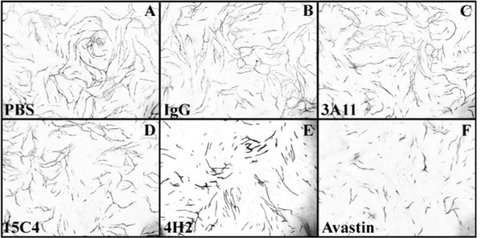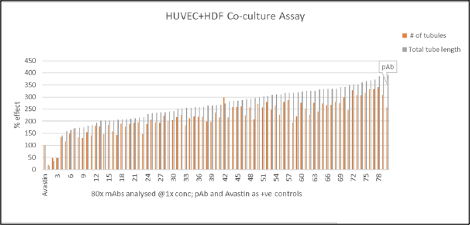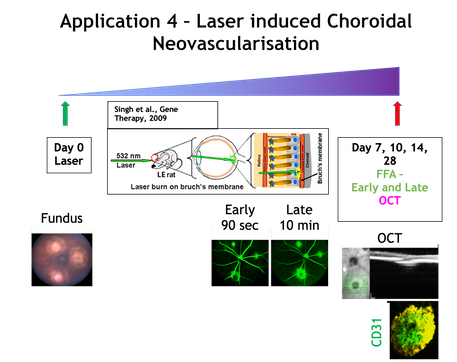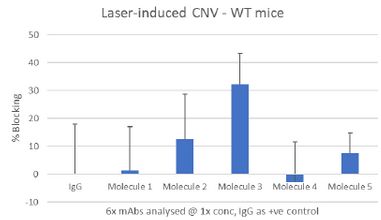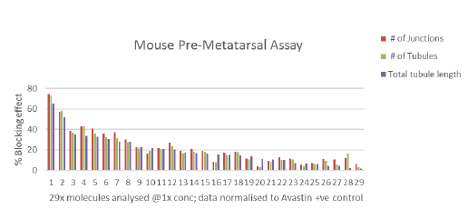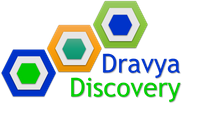DravItro
In vitro Matrigel Screening assay
- High throughput format analyzing angiogenesis inhibition or stimulation effects of drug modalities.
- HUVEC cells are plated in 96-well plates, treated with the molecules of interest and the cells are fixed on Day 1 for image and data analysis.
PROS:
- Screening assay at single or multiple concentrations (>100 molecules)
- Shorter timelines
- Species cross reactivity not a necessity
DravItro Coculture
In vitro Matrigel co-culture screening and functional assay
- High and medium throughput format analyzing angiogenesis inhibition or stimulation effects of drug modalities.
- HUVEC and Human Dermal Fibroblast(HDF) cells are plated in 96-well or 24-well plates, treated with the molecules of interest every alternate day and the cells are fixed on Day 14 for image and data analysis.
PROS:
-
Shorter to medium timelines (25-40 days from start of assay to final report)
-
Two human cell types involved therefore gives features translatable to human angiogenesis
- Species cross reactivity not a necessity
DravIvo
- In vivo efficacy assay using wild type or diabetic rat/mice to analyze angiogenesis inhibition or stimulation effects of drug modalities
- Assay allows for eye-to-eye or animal-to-animal control
- In vivo Flouroscien Fundus Angiography (FFA) for early and late stage leakage of vessels is analyzed
- Optical CoherenceTomography analysis of lesions for retinal oedema for Diabetic animals (PDR)
PROS:
-
Enables analysis of function blocking or stimulating effects of molecules at multiple concentrations generating dose-response curve (1-15 molecules)
-
Disease model offering transability to patients
-
Combination therapy possible
-
Lead identification assay
DravExvo
In vitro Matrigel co-culture screening and functional assay
- High and medium throughput format analyzing angiogenesis inhibition or stimulation effects of drug modalities.
- HUVEC and Human Dermal Fibroblast(HDF) cells are plated in 96-well or 24-well plates, treated with the molecules of interest every alternate day and the cells are fixed on Day 14 for image and data analysis.
PROS:
-
Shorter to medium timelines (25-40 days from start of assay to final report)
-
Two human cell types involved therefore gives features translatable to human angiogenesis
- Species cross reactivity not a necessity




